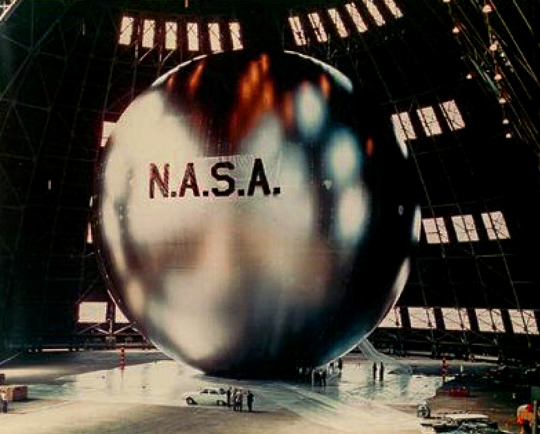Text


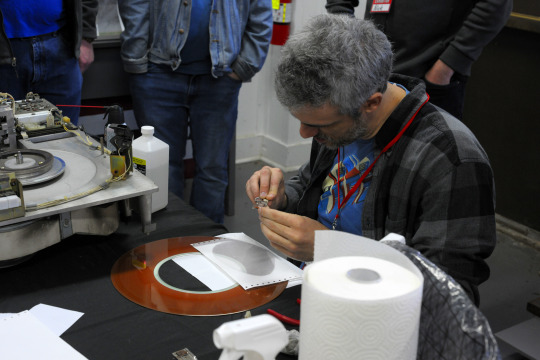
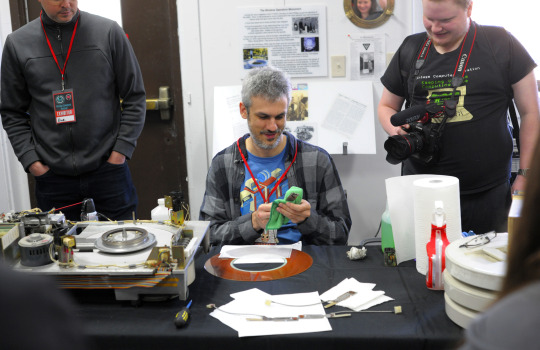

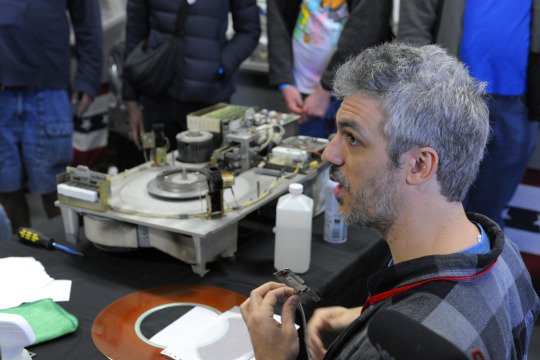
Usagi Electric's live Hawk hard drive restoration on Sunday of VCF East XIX
#vcfexix#vcf east xix#vintage computer festival east xix#commodorez goes to vcfexix#usagi electric#hawk drive
7 notes
·
View notes
Text

This photograph shows activities during assembly of the Skylab cluster at the Vehicle Assembly/Checkout building. The Saturn V S-IVB stage is shown at left, and right is the Orbital Workshop (OWS) being readied for mating to the thruster. The S-IVB stage was modified to house the OWS, which provided living and working quarters for the Skylab crews. The Marshall Space Flight Center had responsibilities for the design and development of the Skylab hardware, and management of experiments.
Date: 1970
NASA ID: S70-19524
22 notes
·
View notes
Text


Omni Rover (2011) by Vstone, Osaka. Omni Rover is an omnidirectional mobile cart robot equipped with four Omni wheels. It's highly manoeuvrable, able to move forward, backward, left, right, diagonally, and turn on the spot. It can carry a payload of approximately 40 kg, and has a maximum speed of 1.2 m/s. Like the Mega Rover, it's equipped with an ARM microcontroller.
14 notes
·
View notes
Text
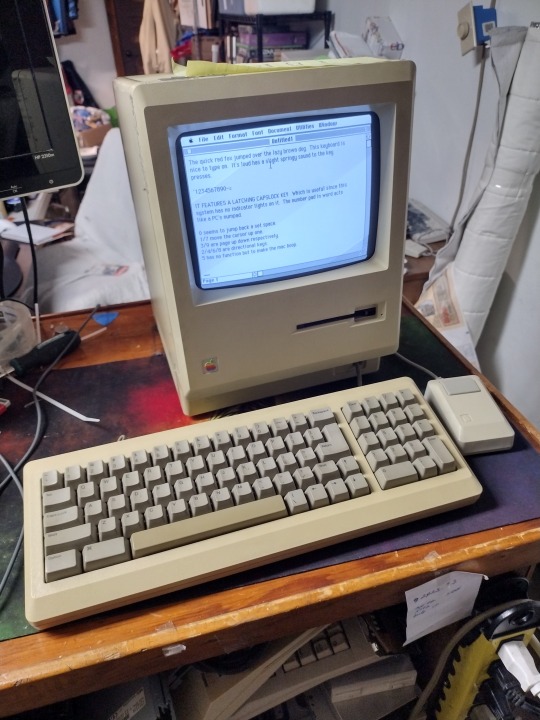
Mac Plus works finally. The flickery CRT was addressed
The keyboard is very nice to type on, but oh man Mac OS 6 is not a particularly fast OS on this system.
TO DO
Finish working on the analog board. Amiga of Rochester gave me a good start.
28 notes
·
View notes
Text

Sperry Rand Univac announces the interlinking computers - 1966.
28 notes
·
View notes
Text
I SWEAR TO FUCKING GOD BOB ROSS IS A GIFTED GOD
I DREW ALONG TO HIS VIDEO IN MS PAINT AND

HOW

THE

FUCK

THIS MADE ME SO HAPPY I DONT EVEN KNOW HOW PLEASE I ADVISE YOU GUYS TO DRAW ALONG WITH BOB ROSS IN MS PAINT IT IS AN EXPERIENCE I AM SO CONFUSED BUT PLEASED FUCKING DO IT
362K notes
·
View notes
Text
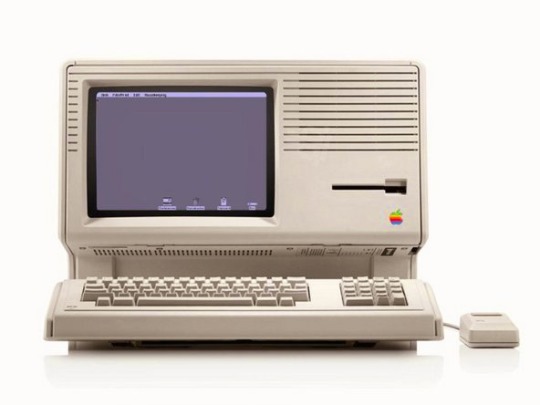

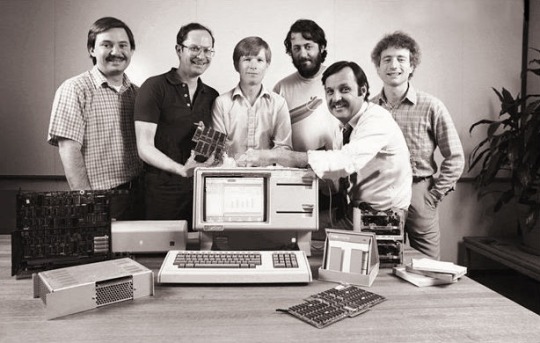

🇺🇲 Embark on a journey through the revolutionary history of the Apple Lisa—a groundbreaking computer that paved the way for modern computing as we know it!
🍏 The Apple Lisa, introduced in 1983, was a landmark achievement in the world of personal computing. Developed by Apple Inc., it was named after Steve Jobs' daughter, Lisa. This innovative machine was one of the first to feature a graphical user interface (GUI) and a mouse, making it incredibly intuitive and user-friendly.
💻 The Apple Lisa was designed to cater to the needs of business professionals, offering advanced features and capabilities that were unparalleled at the time. Its GUI allowed users to interact with the computer using icons and windows, revolutionizing the way people interacted with technology.
💾 Under the hood, the Apple Lisa boasted impressive specifications for its time, including a Motorola 68000 processor running at 5 MHz, up to 2 MB of RAM, and a high-resolution display. It also featured innovative software such as LisaDraw, LisaWrite, and LisaCalc, which provided users with powerful tools for productivity and creativity.
💡 Despite its groundbreaking features, the Apple Lisa faced challenges in the market due to its high price tag and competition from other manufacturers. However, its legacy lived on, paving the way for future innovations in personal computing.
📈 The Apple Lisa may not have been a commercial success, but its impact on the industry was profound. Many of its features and technologies would later be incorporated into the iconic Macintosh, which would go on to become one of the most influential computers of all time.
🚀 Today, the Apple Lisa is remembered as a symbol of innovation and forward-thinking design. Its legacy continues to inspire generations of computer enthusiasts and serves as a reminder of the transformative power of technology. As we look back on the history of computing, let us not forget the pioneering spirit of the Apple Lisa and the role it played in shaping the digital world we know today.
22 notes
·
View notes
Text
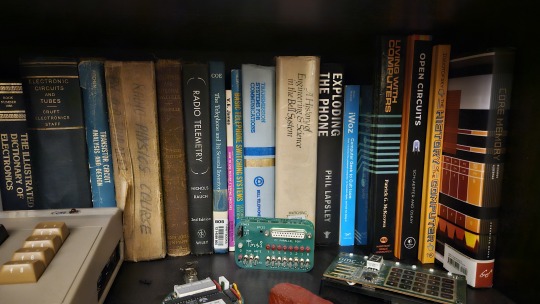
Another of my book shelves, featuring my telephony books, some radio and radar references, and my modern history/aesthetic books
16 notes
·
View notes
Text
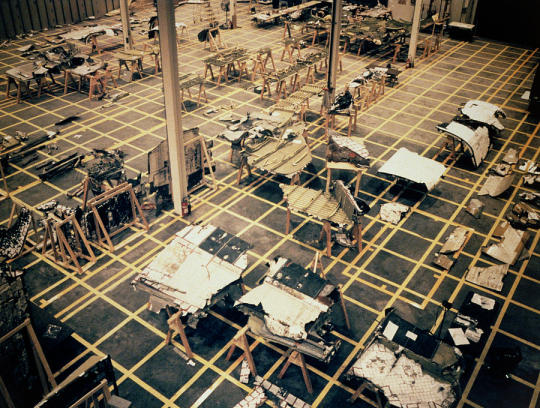
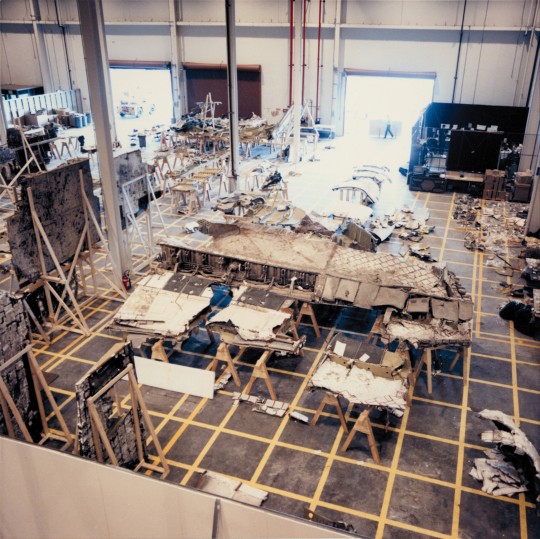
"On January 28, 1986, the Space Shuttle Challenger and her seven-member crew were lost when a ruptured O-ring in the right Solid Rocket Booster caused an explosion soon after launch. After the accident, search and recovery teams worked for months to bring debris from Shuttle to impoundment areas at the Kennedy Space Center and the Cape Canaveral Air Force Station, where reconstruction teams separated the pieces of the orbiter from those of the External Tank and the Solid Rocket Boosters. Taped squares on the floor turned the impoundment areas into a grid in which the reconstruction teams could piece together the Shuttle debris like a puzzle with many missing segments. Shown here is the reassembled Orbiter."
Date: April 9, 1986
Science Photo Library: link
NASA ID:: GPN-2004-00002
24 notes
·
View notes
Text
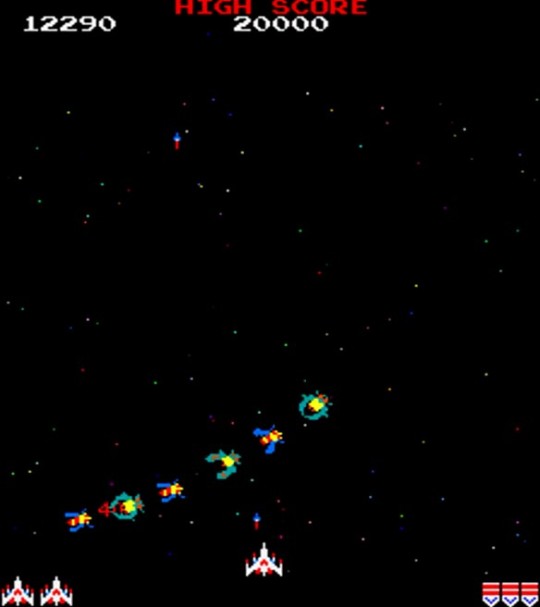
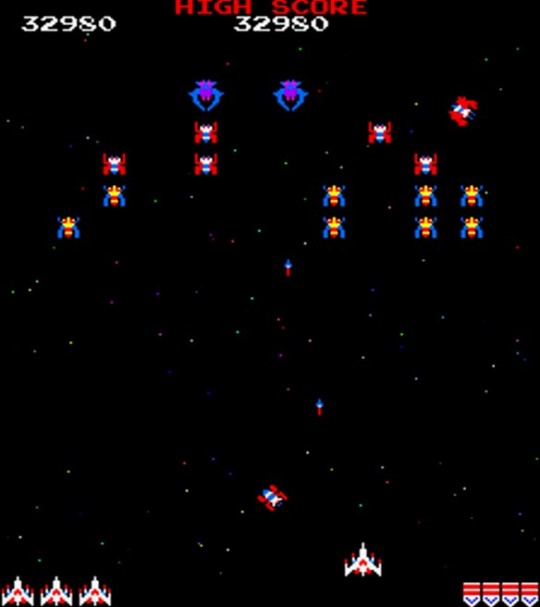
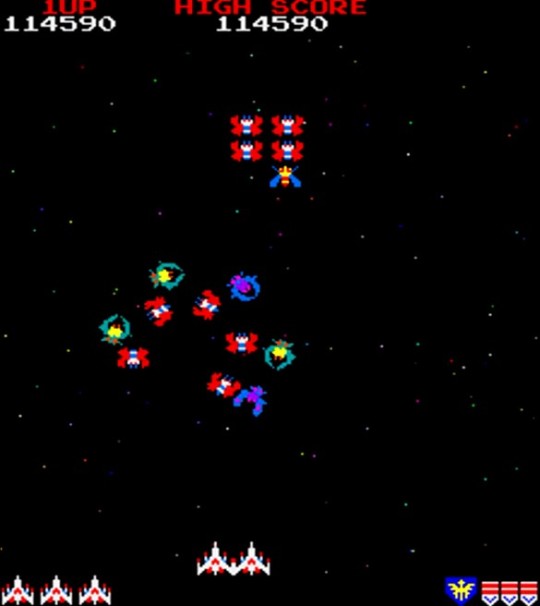

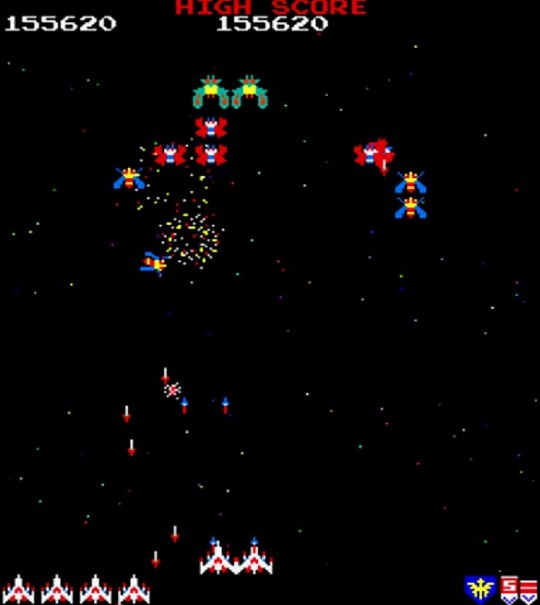
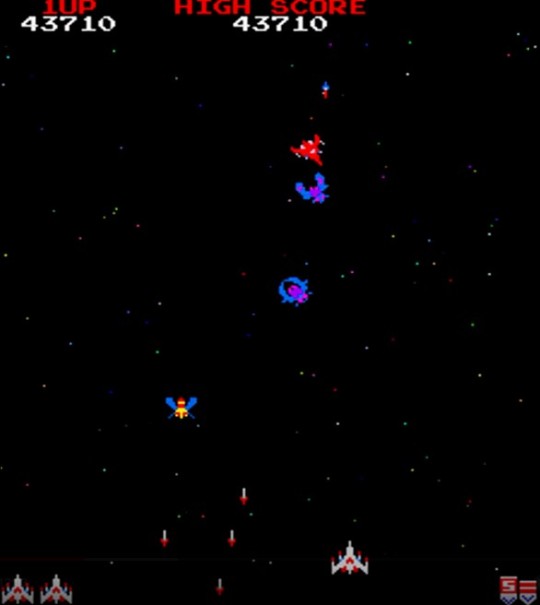
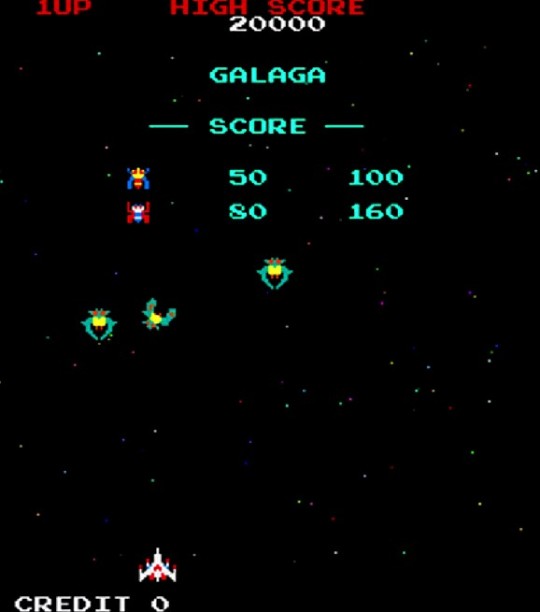
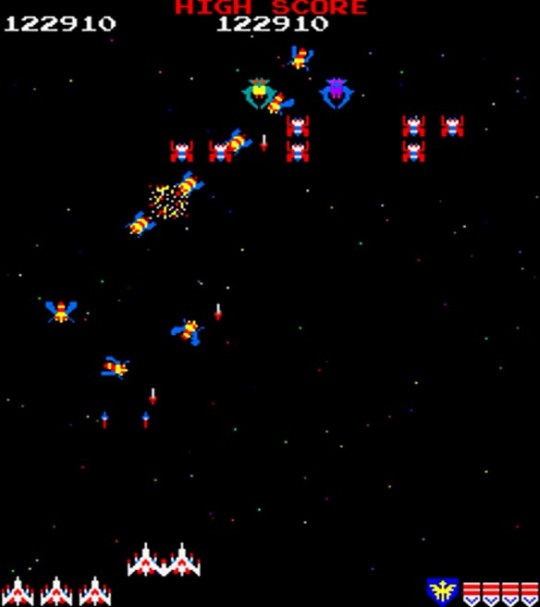

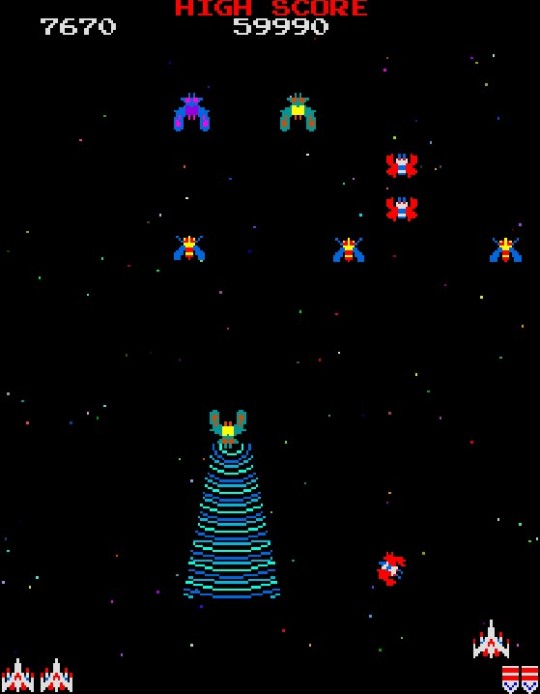
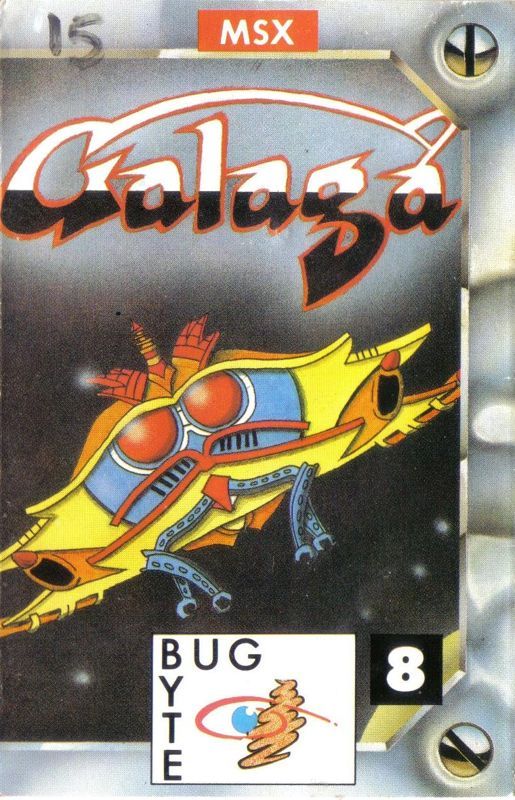
48.) Galaga
Release: September 1981 | GGF: Action, Arcade, Shoot 'Em Up, Score Attack | Developer(s): Namco Limited, Bandai Namco Studios, Inc. | Publisher(s): Namco Limited, Midway Mfg. Co., Sord Computer Corporation, SEGA Enterprises Ltd., Bug-Byte Software, Inc., Dempa Shimbunsha, Atari Corporation, MediaKite Distribution Inc., Namco Bandai Games, Inc., HAMSTER Corporation | Platform(s): Arcade (1981), Sord M5 (1982), SG-1000 (1983), MSX (1984), FM-7 (1985), NES (1985), PC-98 (1985), Sharp MZ-80K/700/800/1500 (1985), Sharp X1 (1985), SEGA Master System (1985), Atari 7800 (1986), Game Boy (1995), PlayStation (1995), Nintendo 64 (1996), i-Mode (2001), Windows (2004), BREW (2005), GameCube (2005), J2ME (2005), PlayStation 2 (2005), Windows (2005), Windows Mobile (2005), Xbox (2005), EZweb (2006), Palm OS (2006), Xbox 360 (2006), Wii (2007), Nintendo 3DS (2011), Roku (2011), BlackBerry (2012), PlayStation 3 (2016), PSP (2013), PS Vita (2013), Wii U (2013), PlayStation 4 (2016), Xbox One (2016)
13 notes
·
View notes
Text
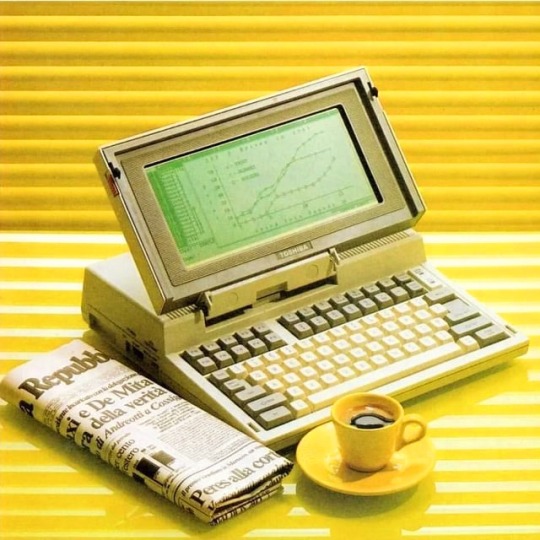




🇯🇵 Unveiling the Toshiba T1100: A Journey into the Dawn of Portable Computing!
💻 In the early 1980s, a revolutionary device emerged, transforming the landscape of personal computing forever. The Toshiba T1100, released in 1985, marked a significant milestone in the history of portable computers. The Toshiba T1100 has subsequently been described by Toshiba as "the world's first mass-market laptop computer".
🌐 The Toshiba T1100 was among the first truly portable computers, designed for professionals and enthusiasts seeking computing power on the go. Weighing approximately 4.1 kilograms (9 pounds) with its lead-acid battery, this innovative machine provided users with unprecedented mobility.
⚙️ Equipped with an Intel 80C88 processor running at 4.77 MHz and boasting 256 KB of RAM, the Toshiba T1100 offered impressive computing capabilities for its time. Its 9.6-inch monochrome LCD screen provided a crisp display, while the detachable keyboard enhanced usability.
💾 The T1100 introduced several innovative features, including a built-in 3.5-inch floppy disk drive—a rarity at the time—which allowed for data storage and transfer with ease. This model also featured MS-DOS as its operating system, providing a familiar computing environment.
📈 The Toshiba T1100 set a new standard for portable computing, demonstrating the feasibility and practicality of laptops for business and personal use. Its success paved the way for subsequent generations of laptops, influencing the evolution of mobile computing worldwide.
👨💻 For professionals in various industries, the Toshiba T1100 represented a game-changer, enabling efficient data management, word processing, and spreadsheet tasks on the move. Its portability and functionality empowered users to work beyond traditional office environments.
🌟 Today, the legacy of the Toshiba T1100 lives on in the sleek, lightweight laptops and notebooks that have become indispensable tools for modern professionals and digital nomads. This groundbreaking device remains a testament to Toshiba's commitment to innovation and excellence in the field of computing. The Toshiba T1100 remains an iconic symbol of the dawn of portable computing—a chapter in the ongoing story of technological progress that continues to shape our digital world.
108 notes
·
View notes
Text

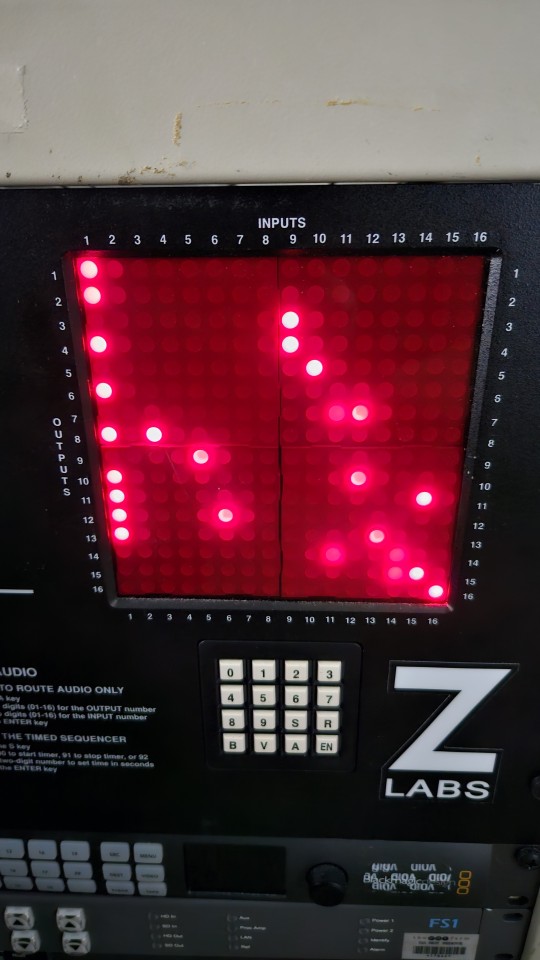
So, some of y'all may have seen my Knox RS16x16 composite video router before in photos. It's the backbone of my home AV plant.
It has two methods of controlling it by default: the front panel keypad with LED crosspoint to view the status, and cereal serial console.

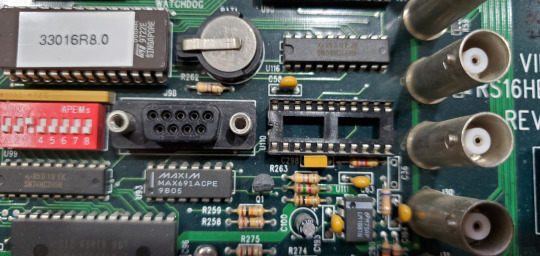
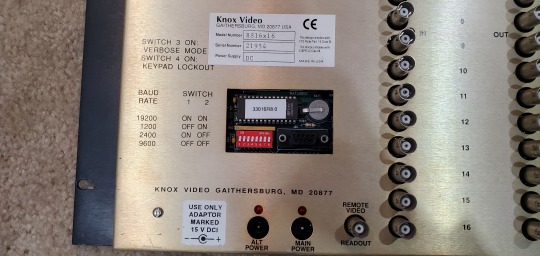
I noticed this empty socket of an uncommon size, and an extra BNC connection marked "remote video readout", but I couldn't find any specifics about it. The manual from 25+ years ago makes a vague reference to it, and how it syncs off of whatever is feeding input #1 to generate video. It was an available option in the earliest days of the product, and then it wasn't mentioned again.
Recently I took a guess about it being a Fujitsu MB88303 television display controller, intended to provide on-screen display information for a TV (for like, function menus n' stuff). It had the same size, and looked to be self-contained, so maybe that was the part... so I bought one. I checked continuity on a few pins compared to the datasheet, and installed it.

I provided a video source to sync on input 1, and... voila! It provides a status display of how the crosspoints are routed! Victory!
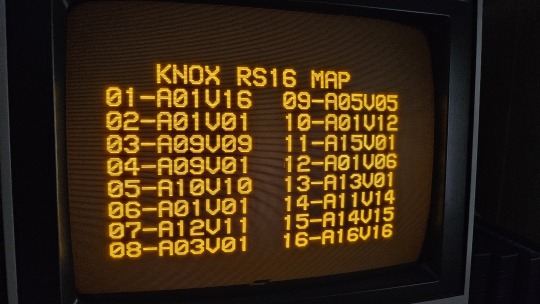
And that's how I upgraded my main composite video router 25+ years after the company expected anyone to bother.
153 notes
·
View notes


